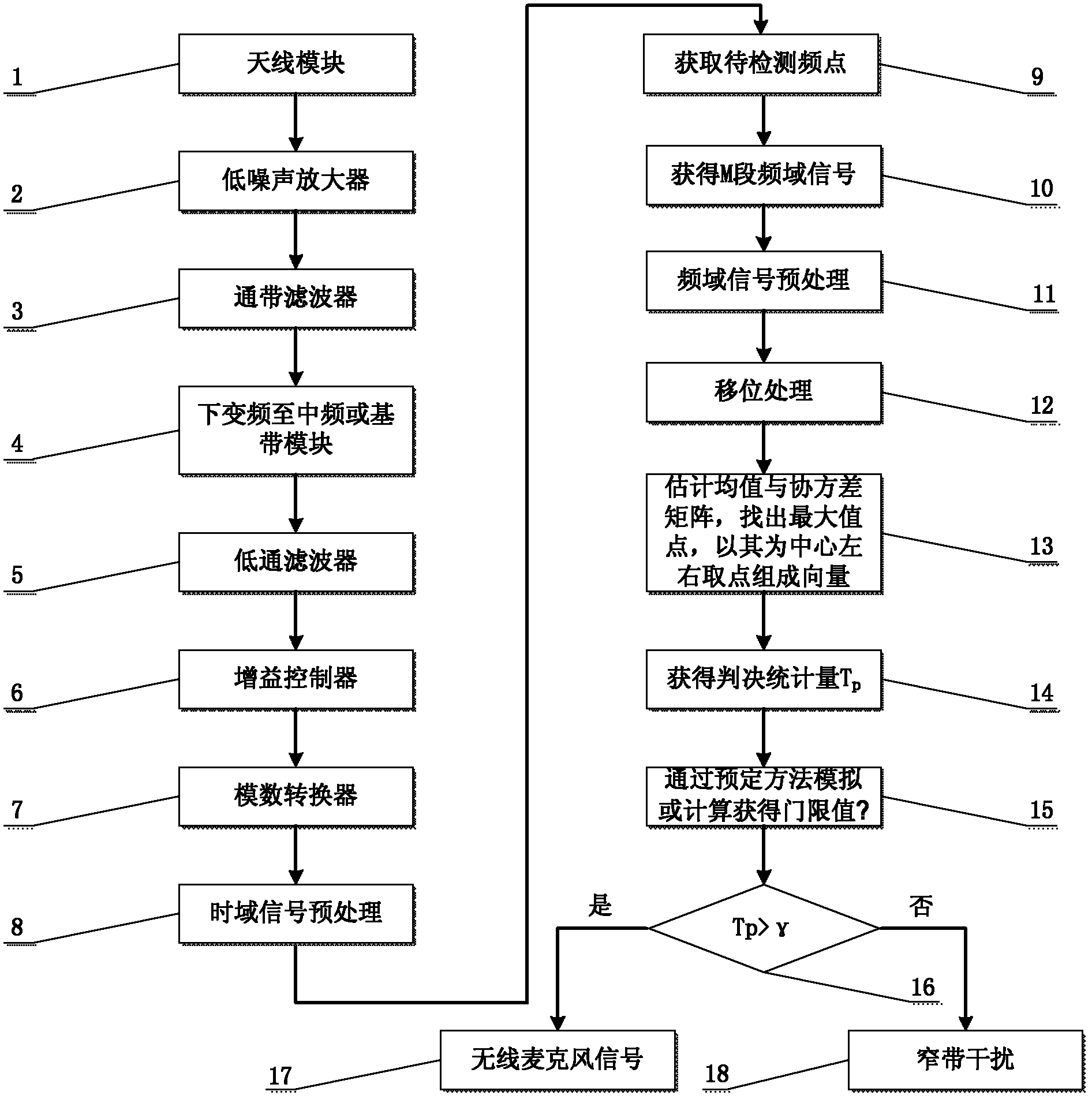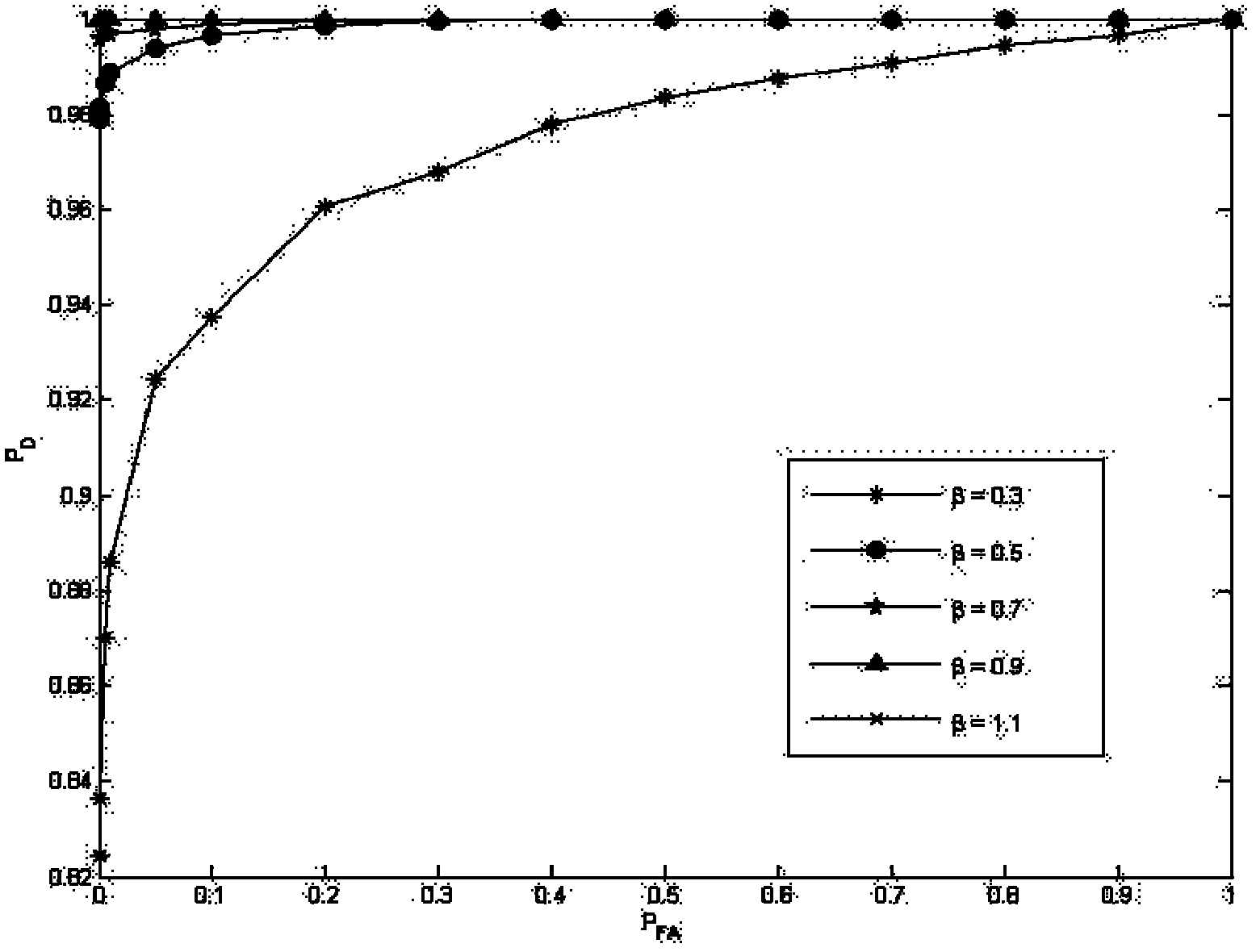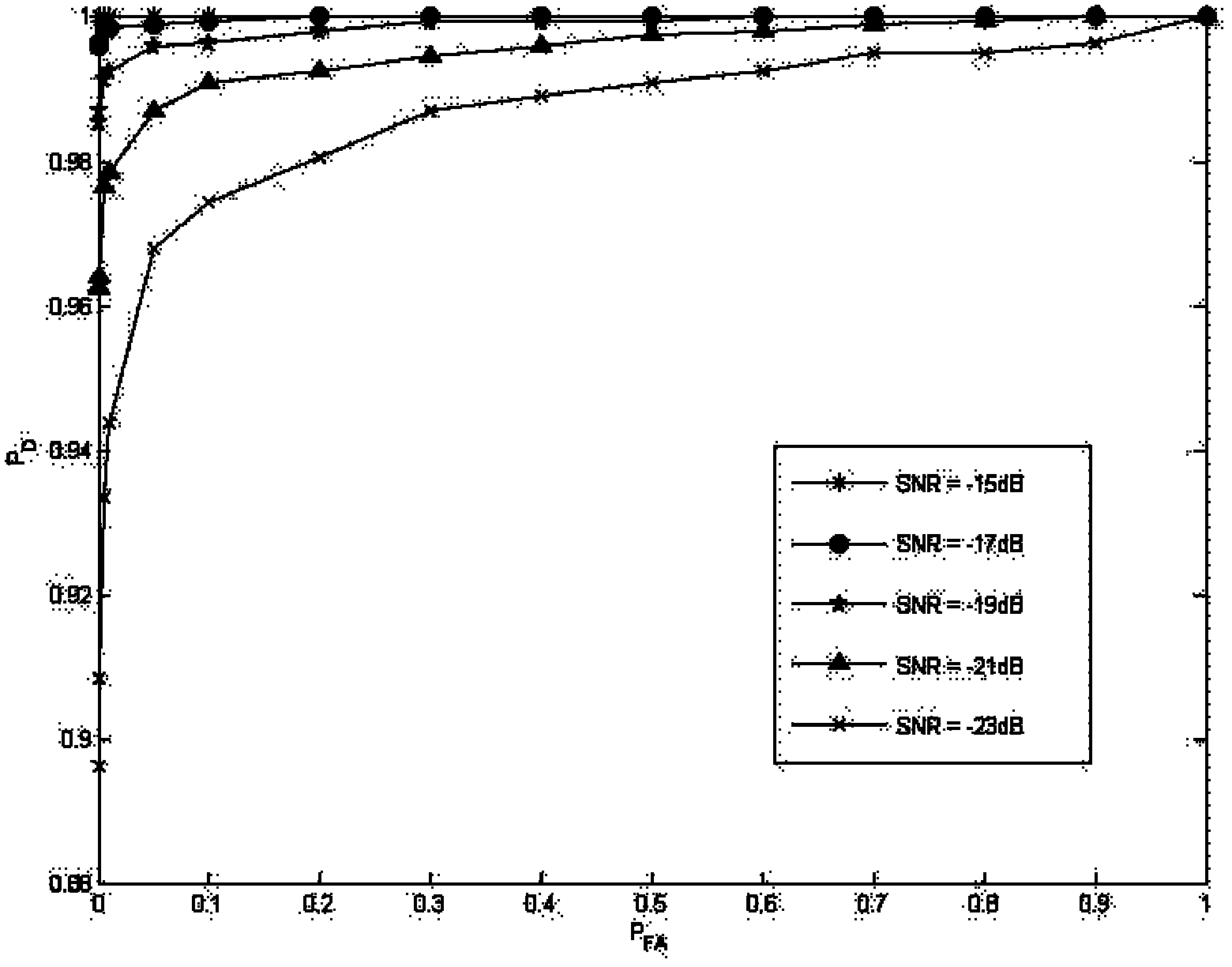Wireless signal detection method based on periodogram
A technology of signal detection and periodogram, applied in the direction of transducer circuit, transmission monitoring, sensor components, etc., can solve the problems of narrow-band interference and wireless microphone signal distinction, high false alarm rate, etc.
- Summary
- Abstract
- Description
- Claims
- Application Information
AI Technical Summary
Problems solved by technology
Method used
Image
Examples
Embodiment 1
[0085] This embodiment describes the system simulation based on the periodogram wireless microphone detection method. The simulation is carried out based on the MATLAB environment, and the specific simulation steps are as follows:
[0086] 1) Generate a sinusoidal continuous wave signal and a frequency modulated (FM) wireless microphone signal, and then perform down-conversion, low-pass filtering, and down-sampling to obtain a baseband discrete-time signal x[n].
[0087] 2) Set the signal-to-noise ratio SNR, frequency modulation factor β and calculate T p The window length L and other performance parameters.
[0088] 3) Use preprocessing algorithm and detection algorithm to process the signal.
[0089] 4) Draw performance curves under different parameters
[0090] attached figure 2 , image 3 and Figure 4 It is the performance curve obtained by simulation, as can be seen from the figure, for the wireless microphone signal of β=0.7, when L is taken as 11 and the false a...
Embodiment 2
[0092] This embodiment describes the actual system implementation of the periodogram-based wireless microphone detection method. The actual system architecture 1 is attached Figure 5 As shown: the signal received by the antenna module 101 is sent to a low-noise amplifier (LNA) 102, and the amplified signal passes through a band-pass filter (BPF) 103, whose bandwidth can be adjusted according to actual needs, and then the filtered signal is sent to Orthogonal down-converter 105, using the frequency points in the selected TV band as the frequency of the local oscillator 104 to perform quadrature down-conversion processing on the signal, and then obtain IQ two-way signals, and then let the two-way signals pass through low-pass filtering with a certain bandwidth (LPF) 106 and intermediate frequency amplifier (IF Amp) 107 and send the IQ two-way signal that puts out in the analog-to-digital converter (ADC) 109, and finally send the two-way digital signal that ADC109 comes out in t...
PUM
 Login to View More
Login to View More Abstract
Description
Claims
Application Information
 Login to View More
Login to View More - R&D
- Intellectual Property
- Life Sciences
- Materials
- Tech Scout
- Unparalleled Data Quality
- Higher Quality Content
- 60% Fewer Hallucinations
Browse by: Latest US Patents, China's latest patents, Technical Efficacy Thesaurus, Application Domain, Technology Topic, Popular Technical Reports.
© 2025 PatSnap. All rights reserved.Legal|Privacy policy|Modern Slavery Act Transparency Statement|Sitemap|About US| Contact US: help@patsnap.com



